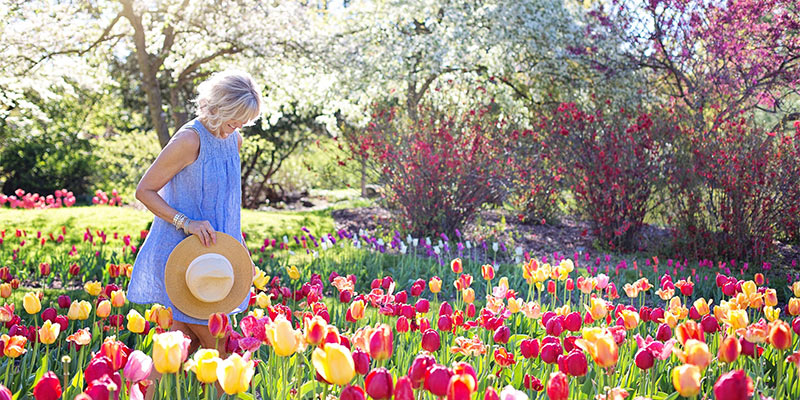
If you’ve always dreamt of having a stunning flower garden, now is the best time to make it happen. This may be the summer to surround your yard with color and fragrance by planting a majestic flower garden for the ages.
A beautiful garden takes time, effort, money and maintenance, so start with a good garden plan to help ease the effort. Thinking about your garden before getting started eliminates a lot of the stressful gardening and provides years of enjoyment. These are some steps you should follow to make sure that your garden is both efficient and beautiful.
Know Your Garden
Knowing your site’s topography, light, and moisture conditions helps a lot when you’re selecting a flower variety that will thrive in your location. You want to consider all the different apparatuses and backyard appliances that you’re using. If there’s anything that might hurt flowers in that list, you’re going to want to avoid that location for your garden.
Soil plays an important role in the growth of your garden. John Kohler from Growing Your Greens explains what to look when you’re digging through your soil. If there’s substantial and visible animal and plant activity, that’s a good indicator of strong, healthy, living soil. The more earthworms and fungi the better. The darker the soil, the more organic matter it is likely to contain.
Choose a Location
Whether your garden is a container on a patio or a lane of your backyard, sunlight exposure is the most important factor to consider in your chosen location. Most flowers need about six hours of full sun each day. Spend time outside and gauge the light and shade in the chosen spot throughout the day. In doing this, you will ensure healthy flower growth for years to come.
Moreover, put your start-up garden in a noticeable area where you’re more likely to be reminded to provide the care it needs.
Prepare the Garden Bed
Clean the area of your chosen location. Remove the grass in the area to give your flowers room to grow. After doing so, till the soil to make it loose and crumbly for planting and if you find rocks, remove them from the area. Then, smooth out the top of the soil so it’s level.
Healthy soil translates to healthy flowers. Most garden soil isn’t perfect for growing flowers, so if it’s not, you need to enrich it. The easiest way to do this is by adding compost, peat moss, or shredded leaves into the top 6 inches of the ground.
Create Your Color Palette/Theme
When designing your flower garden, you should consider creating a color palette or theme that suits your liking. This prevents unharmonious flower garden and unnecessary buying of flower plants or seedlings that might not be put into use.
Unity is the most important factor when choosing a color scheme. Bornstein suggests picking one that will “help unify the landscape” by using different tones of the same color. An example of a theme that we absolutely adore is that of a Butterfly Garden full of shasta daisies, sweet peas, and new england asters. These eye-catching and fragrant flowers will attract beautiful butterflies to your yard, and the aroma will be wonderful as well.
Choose Your Plants
When thinking about the flowers you’d like to grow, consider how much shade and sun the area gets. If it’s a sunny site then you could pick sun-loving blooms such as Dahlias. If it’s fairly shady, you need to pick a flower that’s OK without too much sun such as the Azalea.
Also, consider how much work you want to put into your garden. You can plant perennials that come back every year, but that don’t bloom as much as annuals. An example for perennials would be daylilies, black-eyed Susans, and roses. With annuals, you need to plant them each year, but you’ll get more colorful blooms that last longer such as marigolds, zinnias, and sunflowers.
Maintenance
If you are opting for an almost hassle-free garden, then consider low-maintenance, low-water perennials and annuals that will look good all season long. Try investing in weed killers that help in the proper care of your garden. By doing this, you will significantly cut down the effort that’s necessary to invest in your garden.
If you’d like to keep it simple, start with a few colors and then add more as you go. Three colors is a good place to start. Try a serene selection of pinks and purples, then combine it with some yellows to give the entire garden an orange and red monochromatic look.
Takeaway
Planning out your garden beforehand makes the entire process both relaxing and enjoyable. Take some time to learn basic gardening facts and then be patient when you’re trying to make your garden flourish.
